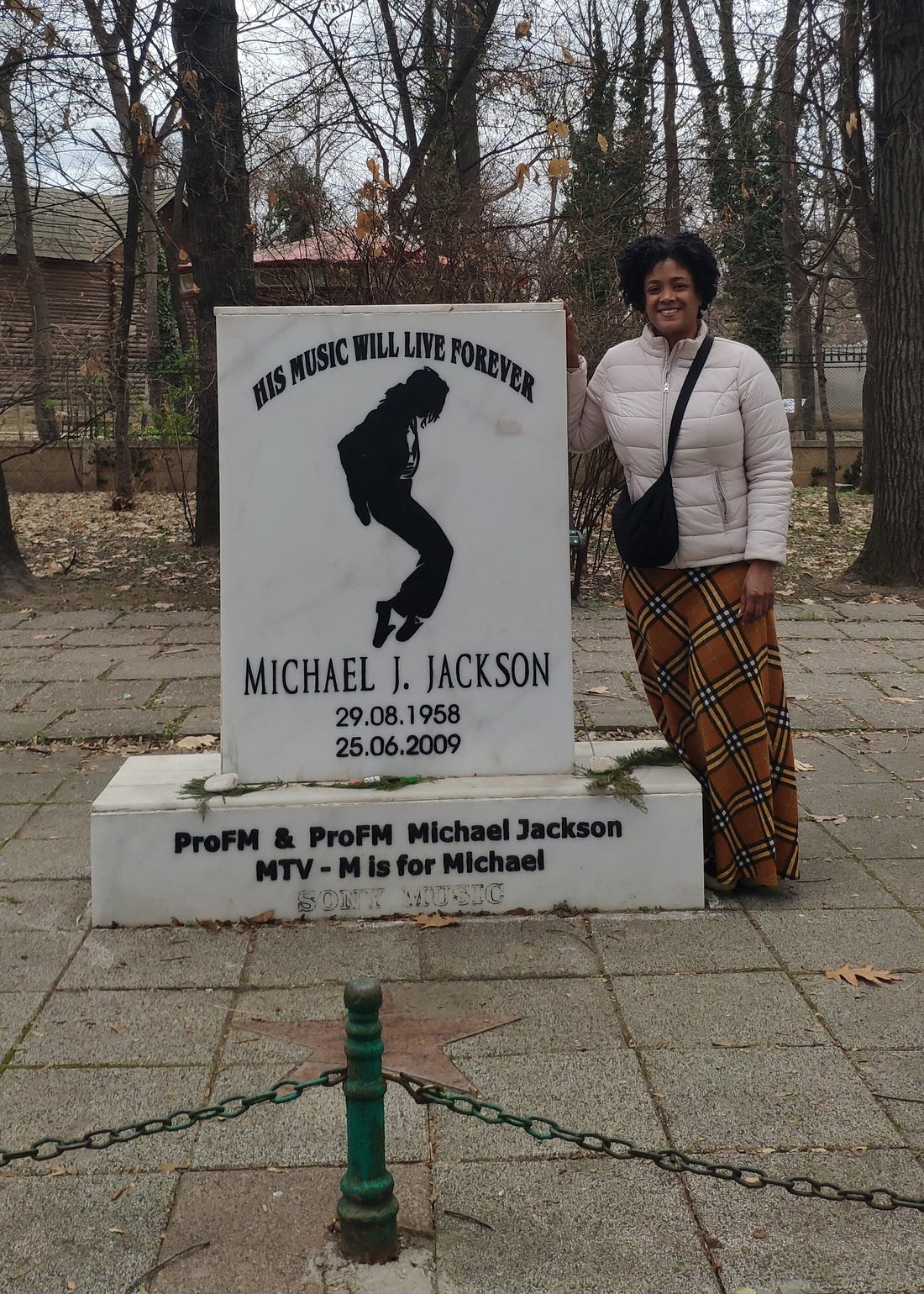Dracula was a fictional character based on Vlad III Dracula aka Vlad The Impaler (Dracula in Romanian is translated to "son of the dragon/devil"). His father's name was Vlad II Dracul. Vlad Dracula had three known castles/residences in Romania; one is located in Bucharest and is undergoing renovations. Contrary to what is being marketed, Bran Castle is NOT Dracula's castle. I've heard conflicting information about Dracula's presence at Bran Castle. Some say that he spent a short time there as a prisoner while others say that he never set foot in the castle. Moreover, Bran Castle is overpriced for what you get, crowded, and overly touristy. It is privately owned by the Romanian royal family and was used as a royal residence before the communists exiled them. If you go to Romania, skip it. There are many other castles worth visiting in Romania. One that I recommend is Peleș Castle, which only accepts cash payments.
 Peleș Castle
Peleș Castle
Interestingly, Vlad The Impaler doesn't have a super negative reputation in Romania, because he vociferously and sadistically fought against corruption, vagrancy, and crime. Legend has it that a bag of gold could be left in the street during Vlad's reign and no one would touch it...I wonder why. I recently stumbled on a very well done Netflix show that has an entire season devoted to Mehmed, the Ottoman ruler, versus Vlad Dracula. Most people know Romania for Dracula, but the country has a lot more to offer than that.
 Vlad Dracula mannequin at Bran Castle
Vlad Dracula mannequin at Bran Castle
When I was in graduate school, one of my classmates was Romanian-American. Through her, I learned that Romanian is a Latin-based language. I had assumed that it would be close to Russian. During my time in Romania, I thought that the Romanian language sounded close to Italian and given that I speak another Latin language, Spanish, I was able to communicate a little. However, most people in Bucharest and at tourist sites speak English.
My graduate school classmate also introduced me to another major figure in Romanian history, Nicolae Ceaușescu. Ceaușescu was the communist dictator of Romania from 1965 to 1989. At the end of the bloody anti-communist Romanian revolution, on December 25, 1989, he and his wife, Elena, were executed on camera. Some people loved him and have nostalgia for the communist period while others are glad that he's dead. My tour guides, who were in their 30s, as well as my elderly cosmopolitan Airbnb host had negative views of communism and Ceaușescu. One of my tour guides emotionally recalled how her mother almost died after an illegal abortion. Ceaușescu had banned abortions and all forms of birth control, including condoms, during a time of severe food rationing. However, when I visited Ceaușescu's grave, it was well maintained and adorned with nationalist symbols. Even my graduate school classmate seemed to have a favorable view of Ceaușescu. She noted that he paid off Romania's international debit and insinuated that that may have been the driving force of his execution. If you want to learn more about Ceaușescu and the Romanian communist era, I recommend the "free" walking tour, The Story of Bucharest, Ceaușescu's House, and Communist Museum. Insider tips: be sure to book Ceaușescu's House in advance and bring your passport. Also, you can try the communist era coffee substitute, nechezol, at the Communist Museum.

Nicolae and Elena Ceaușescu's grave
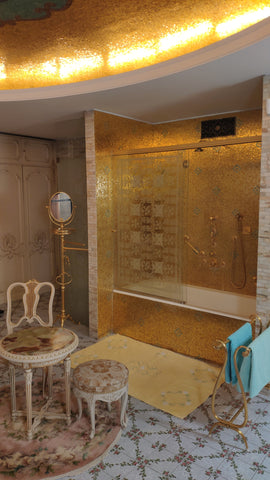
Ceaușescu's golden bathroom at Ceaușescu's House
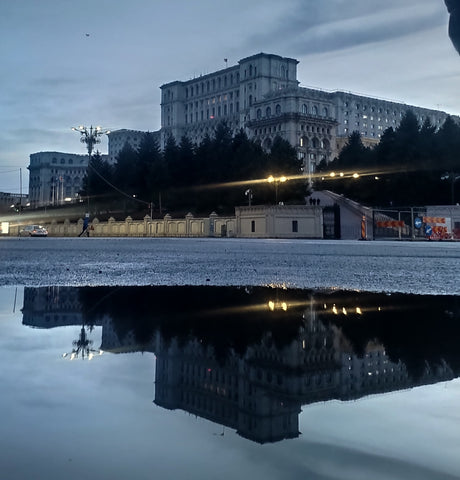 Palace of the Parliament
Palace of the ParliamentInsider tip: you cannot book a parliament tour on the Parliament's website. There are third party sites that charge an extra fee for online bookings. It's best and cheaper to call the Parliament the day before at +40 733 558 102 or +40 733 558 103 to book a tour. When I called, the lady who answered spoke English. Don't forget to bring your passport.
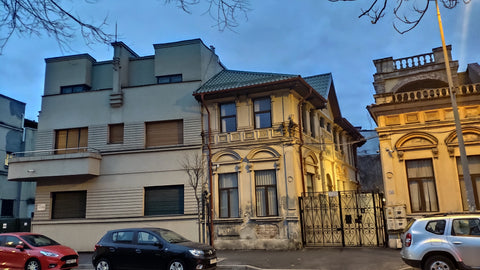
Art Deco building next to a 19th century French-inspired building
There are a few off the beaten path things to do in Bucharest that I want to highlight. First, I found this awesome store called My Romanian Store, that sold handmade local items. I was pleasantly surprised that its Chief Marketing Executive was a cat. The cat chose them in August. He came in the morning when the shop opened and left when the shop closed. When it started to get cold, an artist who lived upstairs offered to keep him at night. He doesn't have a name, because he doesn't respond to the names they've given him. They just refer to him as My Romanian Cat at My Romanian Store. He was very sweet.
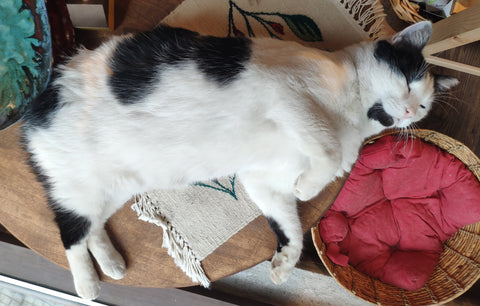 My Romanian Cat at My Romanian Store
My Romanian Cat at My Romanian StoreThe Village Museum is an open-air ethnographic museum that showcases traditional Romanian village life. Structures in the museum ranged from the 17th to the 20th century and were representative of different ethnographic regions. It's best to go between April and October, because more structures are open during warmer seasons.

The best thing about the Village Museum were the friendly cats
Opened in 1983 during the communist regime, the Politehnica metro station was decorated with limestone slabs from the Apuseni Mountains in Romania. At that time, no one knew that these visible and strange shapes on the marble surface were fossils of prehistoric beings.
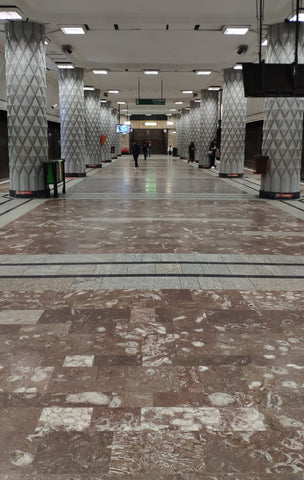
The pinkish-brownish marble on the Politehnica metro station floor is colored in unusual patterns, which are 80 million-year-old fossils.
Another interesting communist-era site is the Romana metro station. According to one of the three planners of the station, when shown the plans for the Line M2 in 1985, Elena Ceaușescu reportedly demanded the station's removal. According to some of the people who worked on the station, Ceaușescu was supposedly concerned that workers and students were starting to gain weight and needed more exercise. The engineers knew that the station would be necessary, and the station was built in secret. Because of this, the platforms are somewhat asymmetrical, very narrow (less than 1.5 m wide) and the waiting area is in a corridor separated by thick walls from the platforms in order to sustain the station's structure.
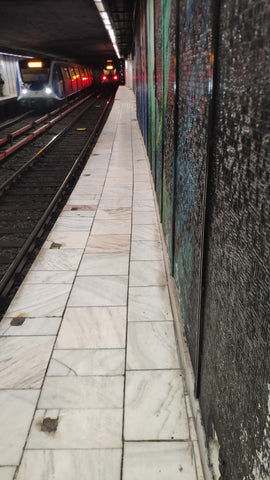
1.5 meter platform at Romana metro station
Finally, my last day in Bucharest was spent at Therme spa. It is one of the best spa's I've been to and is highly affordable. Read my blog post for more details about my day at Therme. Also, if you want to venture outside of Bucharest, a Romanian ex-coworker suggested the cities of Sighișoara and Constanța.
THINGS TO DO
- Ceauşescu House
- Therme Spa
- Bucharest Old Town
- Politehnica Metro Station
- Museum of Recent Art
- My Romanian Store
- Palace of the Parliament
- Romanian Athenaeum
- Communist Museum
- National Village Museum
- Peles Castle
- Stavropoleos Monastery
- National Museum of Art
- Michael Jackson Monument (located in King Michael I Park)
RESTAURANTS
- Restaurant Savart
- BCheese
- Bistrot Francais
- Caru' cu bere
- Tucano Coffee (try the creme brulee coffee and hazelnut cheesecake)
- Noua B.A.R.
- Piatto 77
- Frudisiac
- Manuc's Inn

